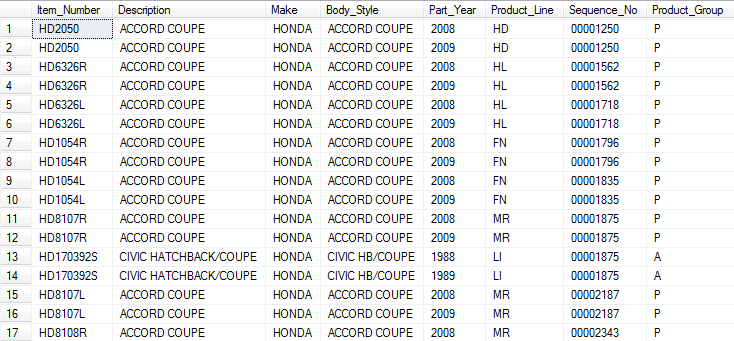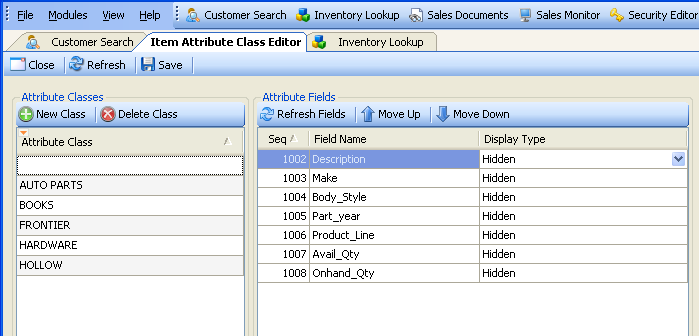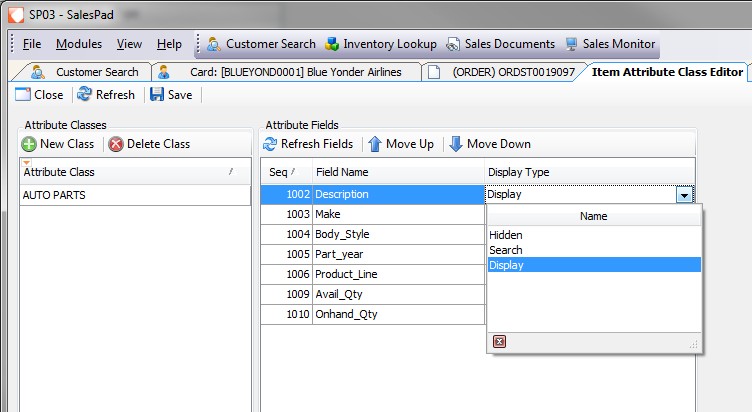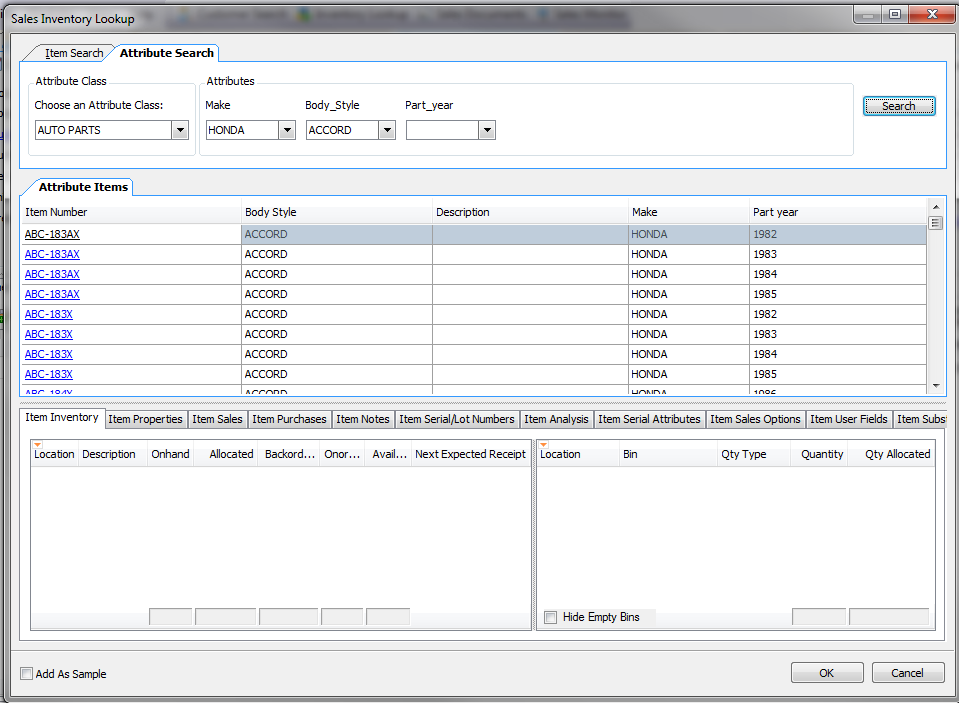Overview
Item Attribute Classes are used to supplement the Inventory Lookup capability by allowing users to search for items meeting a specified set of criteria (configured in the Item Attribute Class Editor).
Selected item(s) can then be added to a sales document.
Security
Item Attribute Class Editor must be enabled in the Security Editor (Modules > Security). Find the setting in the security grid and make sure it is checked. Save any changes.
Note: You must log out and log back in for security changes to take effect.
Setup
ITEM ATTRIBUTES TABLE
Note: The Item Attributes function was designed to bring outside data into item searching in SalesPad. This is a very tailored setup and will be slightly different for everyone.
- First, identify where your attribute data is located. For example, the following table,
_ItemAttribute:

Your attribute table is used to craft a custom view that combines with SalesPad requirements. SalesPad only requires the Item Number column in the attribute table as it is needed for actually adding the item to the order:
- Define the view with the following SQL script:
Create VIEW [dbo].[spcvAttributeItem] as
select
ia.Item_Number
, [Description] = isnull(im.Item_Description, ia.[Description])
, [Make]
, Body_Style
, Part_Year
, Product_Line
, Sequence_No
, Product_Group
, Avail_Qty=invs.Avail
, Onhand_Qty=invs.Onhand
from _ItemAttribute as ia with (nolock)
left join spvItemMaster as im with (nolock) on im.Item_Number=ia.Item_Number
left join spvInventorySearch as invs with (NOLOCK) on invs.Item_Number=ia.Item_Number
ITEM ATTRIBUTE CLASS EDITOR
After defining the view, add the columns into the system using the Item Attribute Class Editor. This module is used to set up and configure the Item Attribute Classes. Go to Modules > Item Attribute Class Editor.
- Click the New Class button on the left to create a new class

- Name the class in the new field (Example: VEHICLE ACCESSORIES, ENGINE, CAR AUDIO)
- Repeat for new classes as needed
- Click the Refresh Fields button on the right hand pane
The system will read the columns from the database/SQL view “spcvItemAttribute” and place them into the Attributes Fields grid.
- Next, click a Display Type field and select the display type for each column: There are three options for how fields will appear in Sales Inventory Lookup:
- Hidden: Column won't show in search area or the result area
- Search: Column will show as a dropdown in the search area
- Display: Column will show in the results grid

- Click Save when finished making changes
Note: When a class is initially set, the associated class defaults will be set in GP. Future changes made to an item class in SalesPad will NOT override the item class settings in GP.
Sales Inventory Lookup – Attributes Search
Access Sales Inventory Lookup via the Sales Entry screen:
- Open a sales document
- Click New to add a new line item
- Click in the Item field and click the ellipsis button (...)

- The Sales Inventory Lookup screen appears. Click the Attribute Search tab

- Select an Attribute class from the dropdown list on the top right. Fields will display in the Attributes box based on the class setup
- Select Attributes from the dropdown lists and click Search. Results will appear in the Attribute Items grid directly below the search options (the more attributes you specify, the smaller the list should be)
- Select an item or items from the list to be added to the sales document.
Note: If the Item Number is not in the item master, it will be added as a non-inventory item - Click OK to return to the sales document
Kayako Admin
Comments